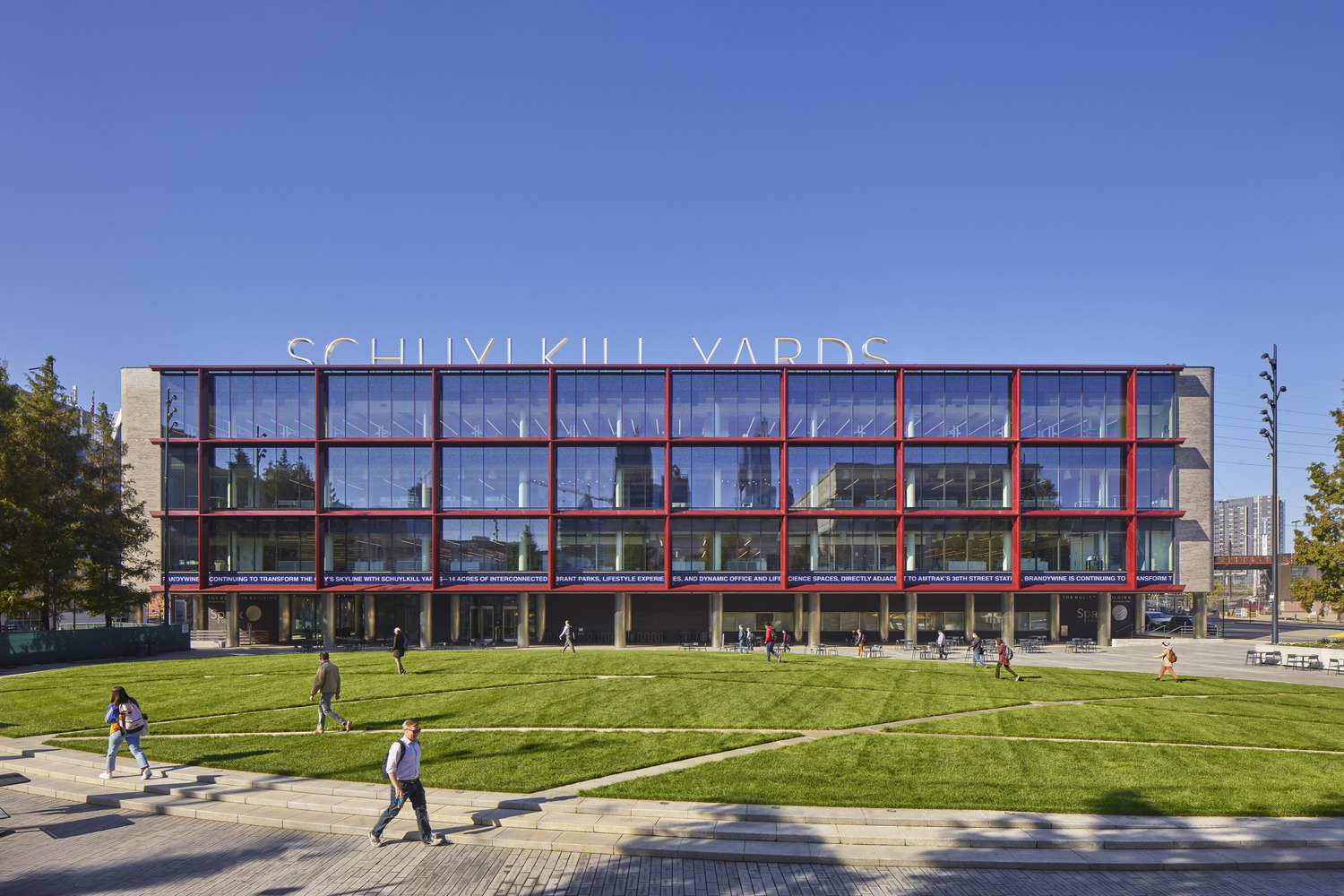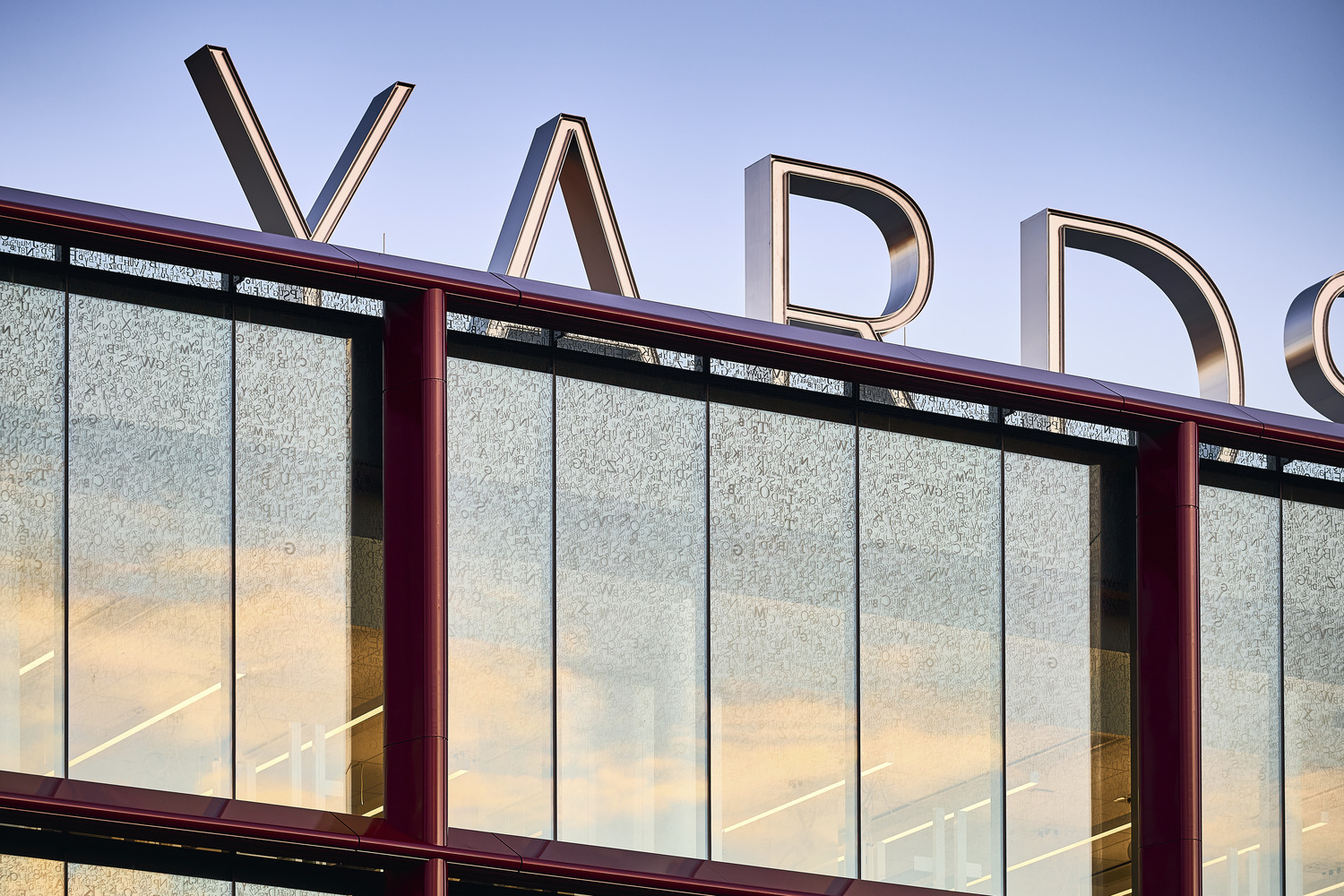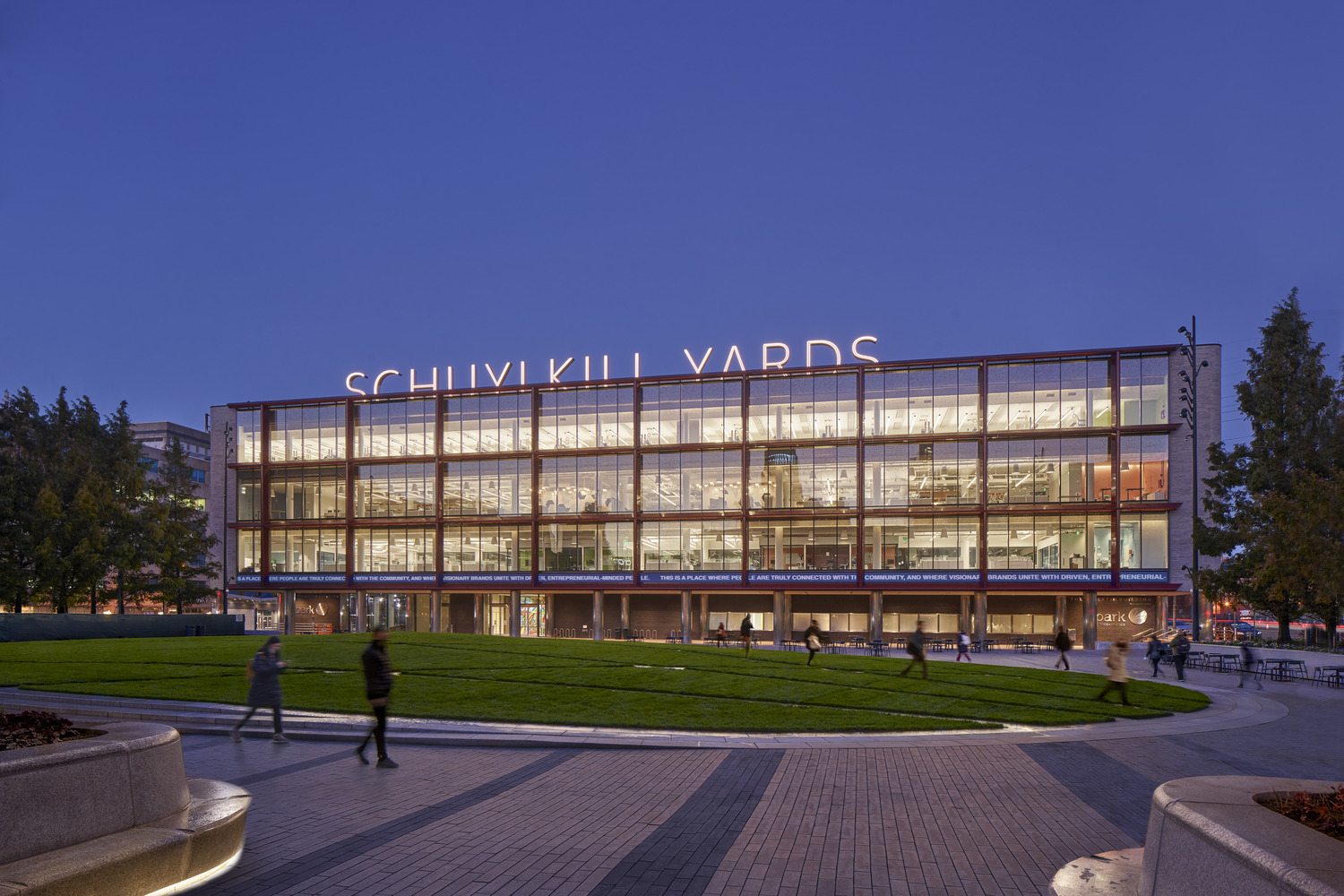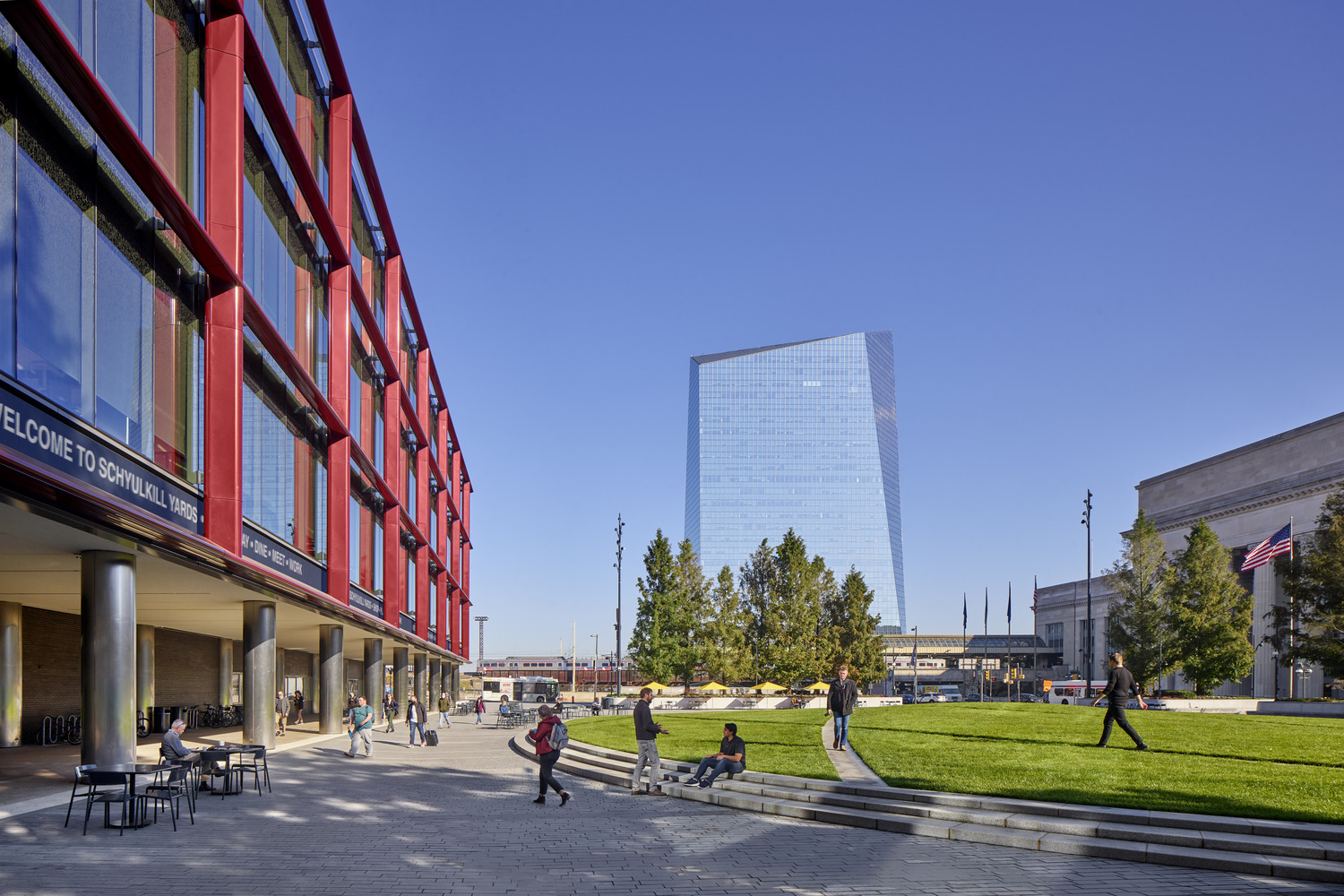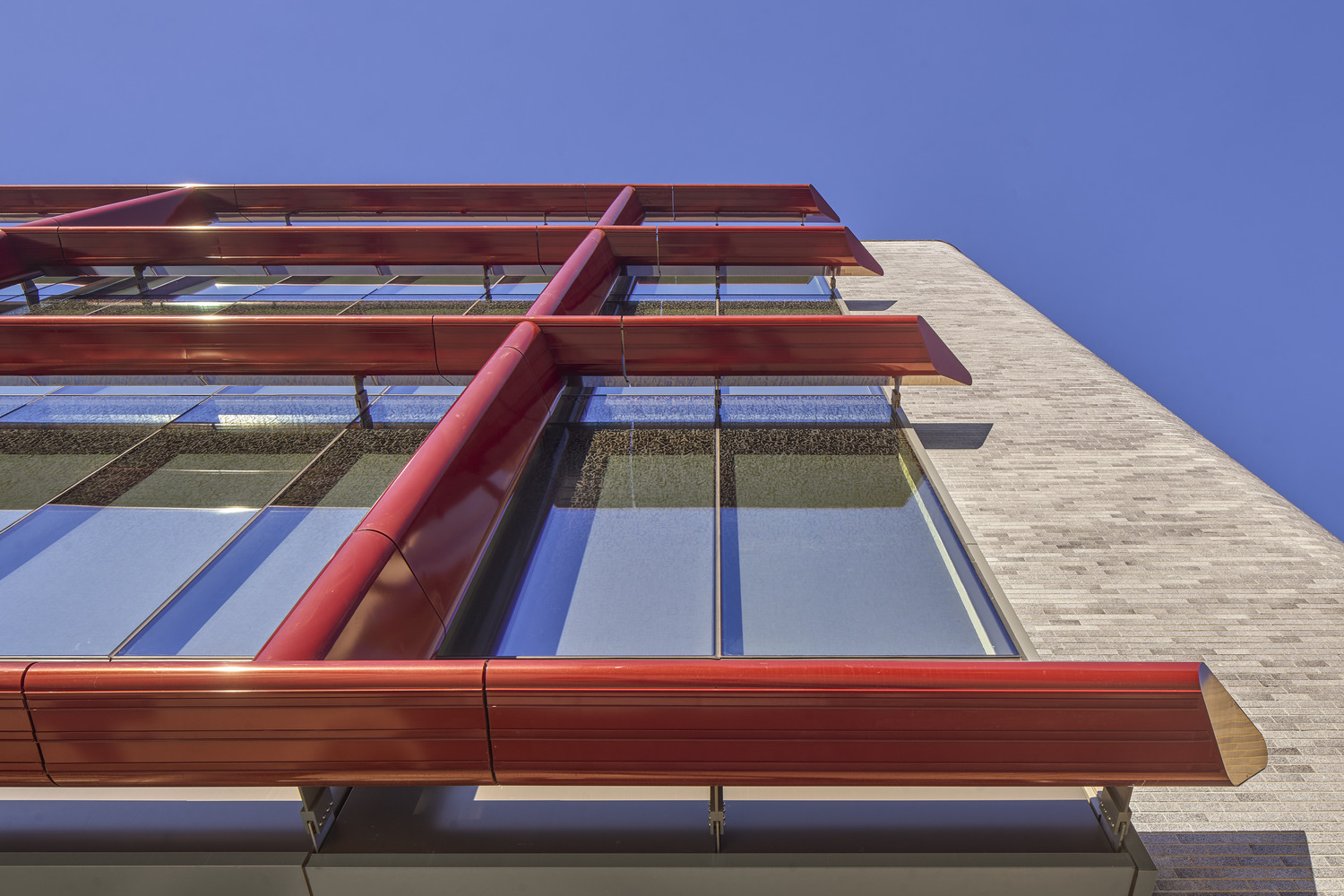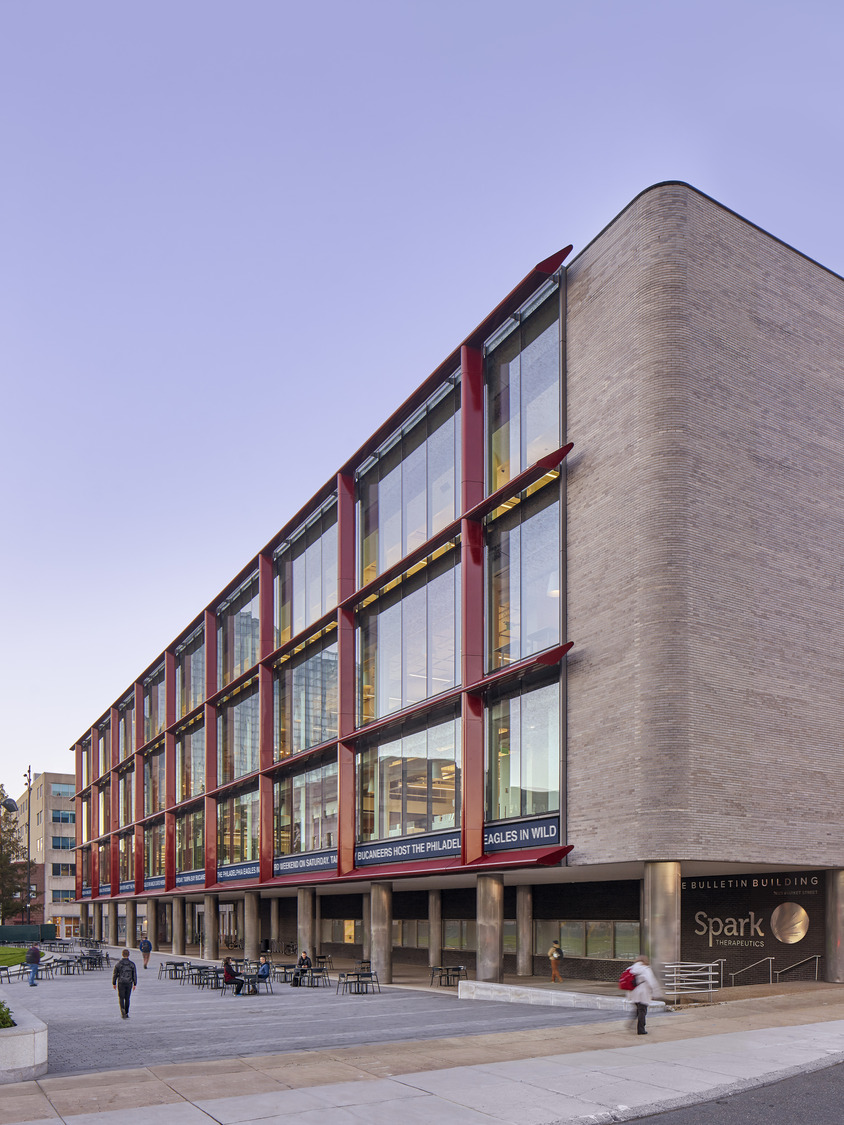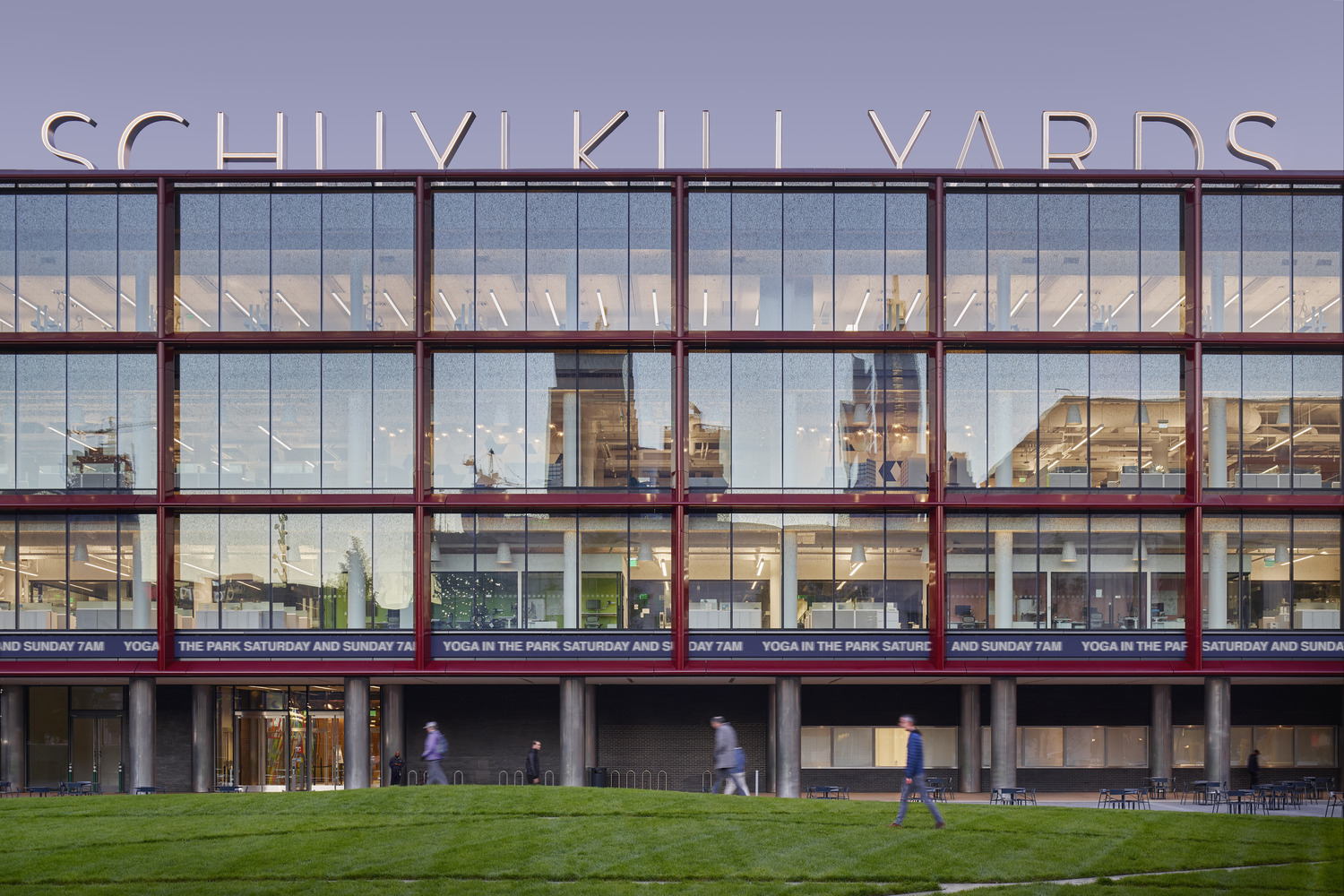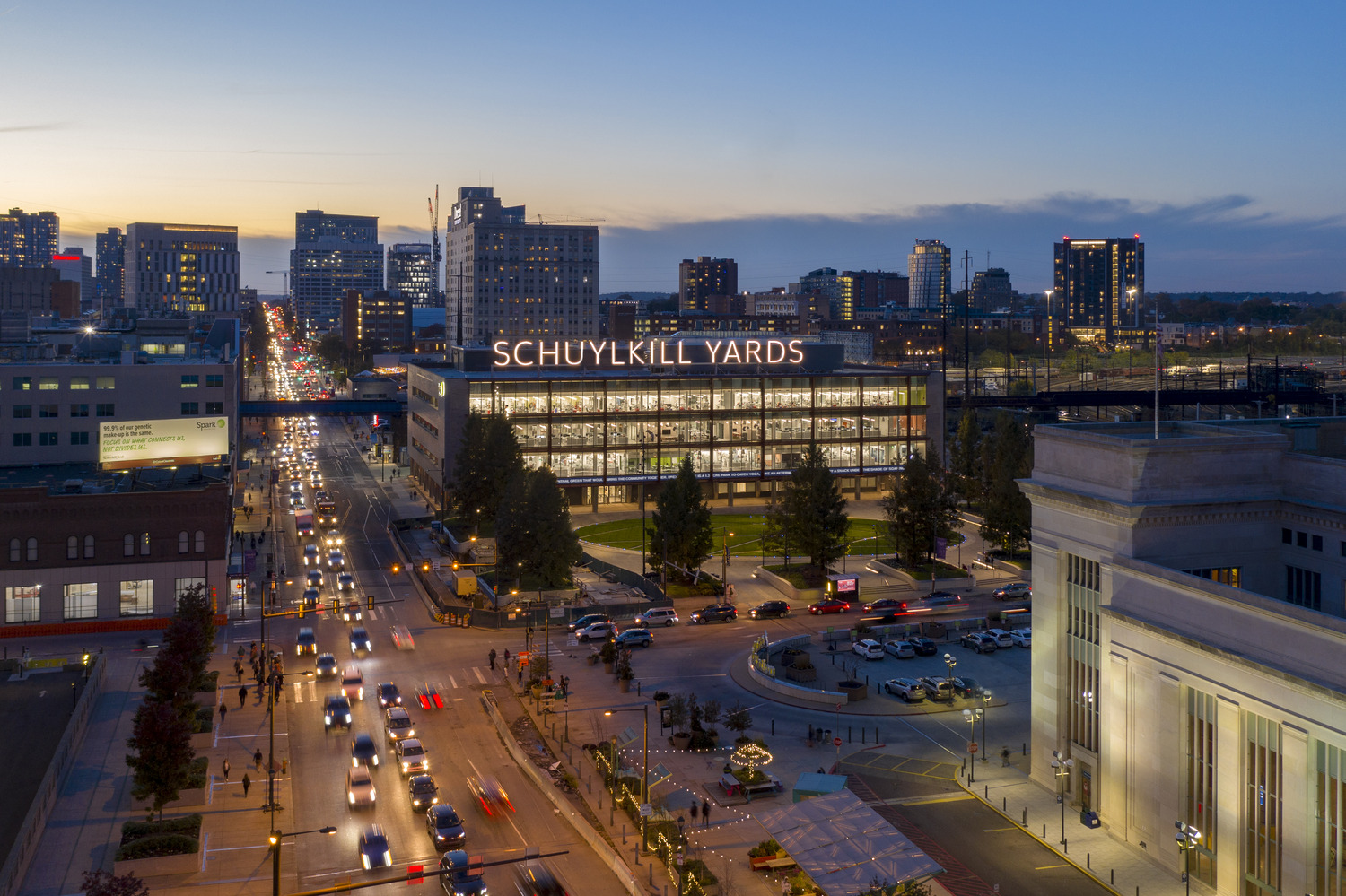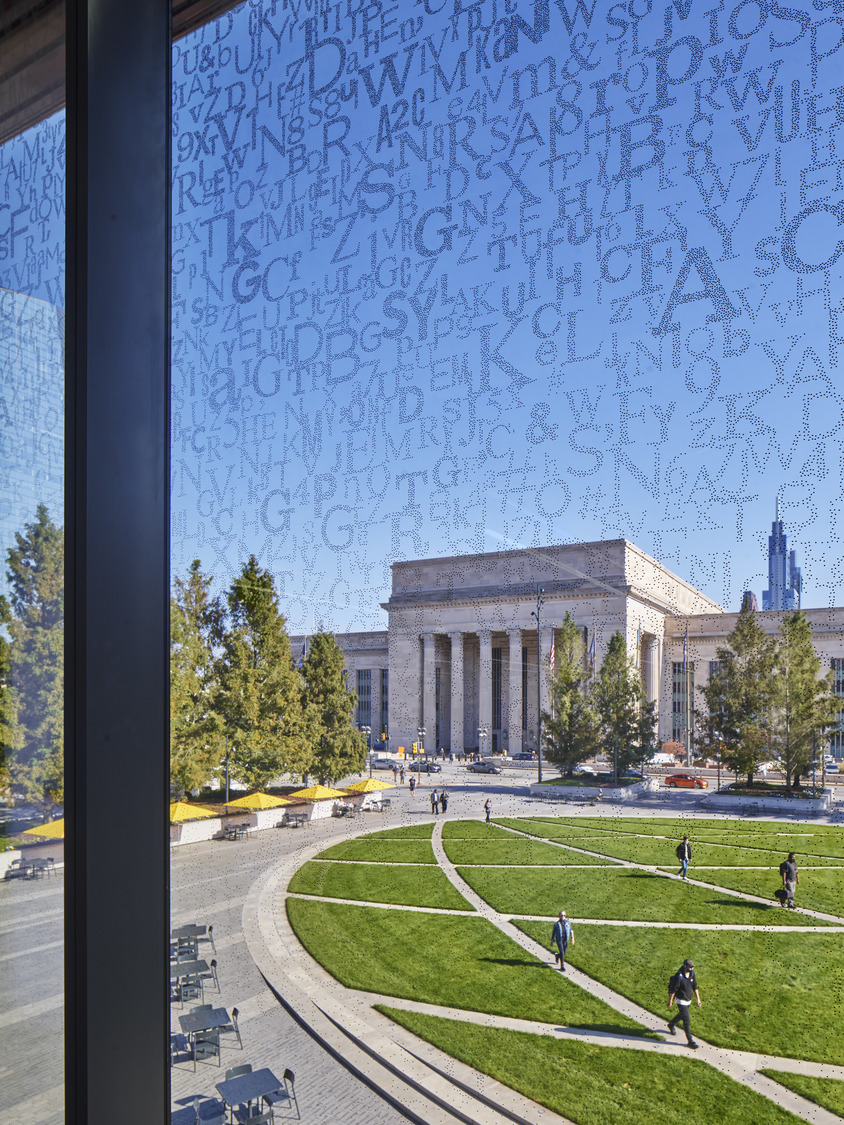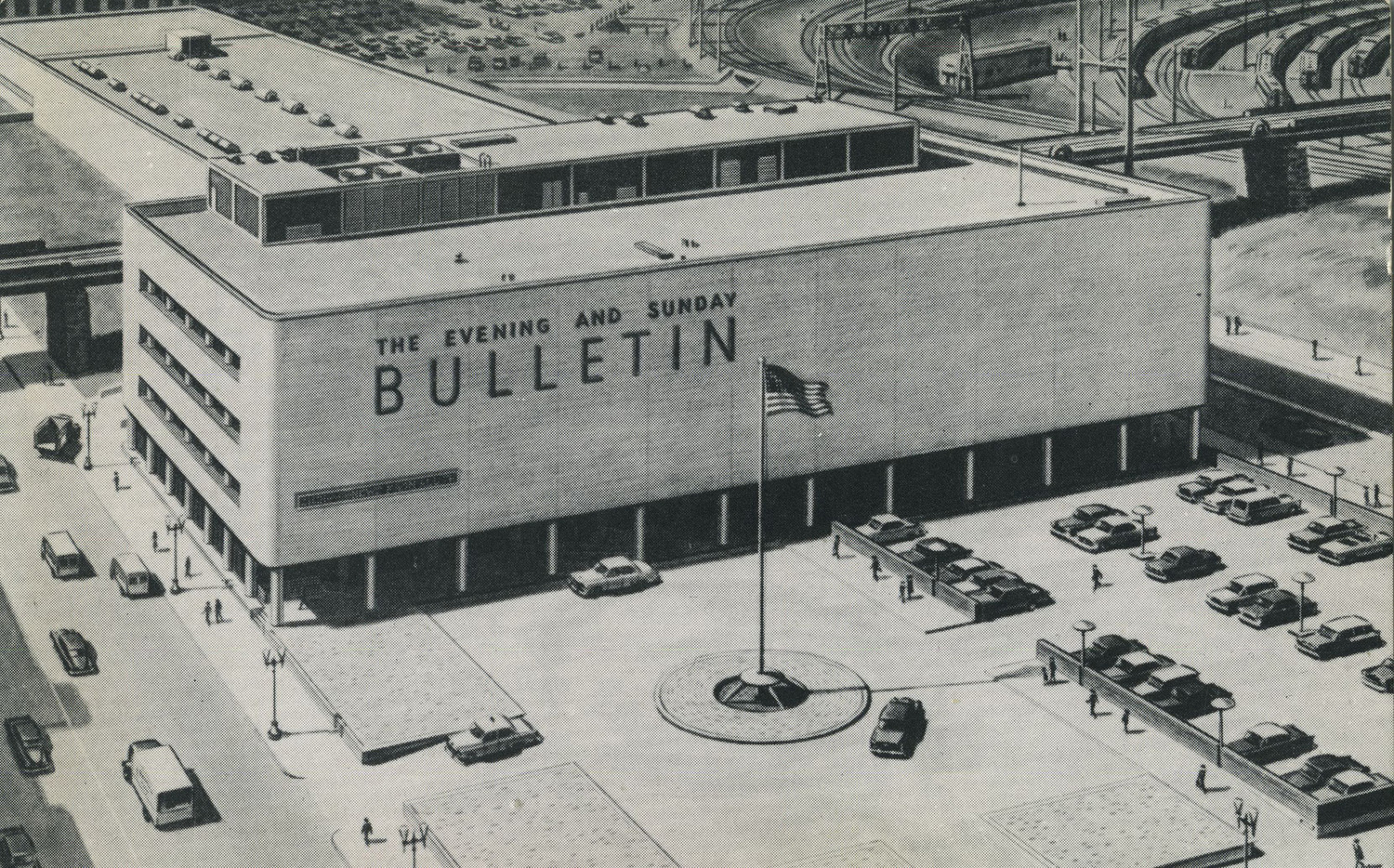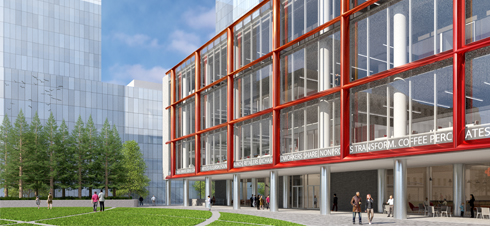High performance glazing incorporates ceramic frit to reduce solar heat gain and make the facade visible to birds. The building's history as a prominent news source of the print era is recalled through a composition of letters in typefaces used by The Evening Bulletin newspaper. | © Halkin Mason Photography
How can a mid-century landmark adapt to the demands of lab research and a new innovation district?
The adaptive reuse of the Bulletin Building transformed an architecturally and culturally significant 1955 structure into a contemporary life science building in Philadelphia. Originally the headquarters of The Evening Bulletin, the country's largest circulation afternoon newspaper, George Howe's design projected a forward-looking, state-of-the-art presence in the postwar period, reestablishing the paper as a modern participant in civic life. A monumental response to the grandeur of the adjacent and iconic 30th Street Station, the original building was simple but powerful: an elevated volume wrapped in a smooth masonry skin sits atop slender stainless steel columns, forming an expansive horizontal eastern facade, marked by subtle asymmetry and assertive signage.
Restoring Monumentality
While deep floor plates, limited natural light, and closed views may have worked for a newspaper in the 1950s, a 21st-century research space demanded reconsideration of the building envelope. In repositioning the building as the first component of the emerging Schuylkill Yards innovation district, Brandywine's goal was to attract ground-breaking, entrepreneurial life science tenants. This translated to replacing the building's primary facade, which in a 1993 renovation had been altered, greatly diminishing the power of Howe's design. An expansive new glazed wall dramatically increases natural light and view, providing well-lit, vibrant loft spaces with views of landscape, rail station, and city beyond.
Designed by George Howe and opened in 1955, the Bulletin Building served as headquarters of The Evening Bulletin. | Courtesy of the Free Library of Philadelphia, Print and Picture Collection
Simultaneous histories
The project gives a fresh identity to the Bulletin while preserving Howe's original design intent. Glazed masonry along with stainless steel detailing and windows were restored throughout the building, and a carefully proportioned facade was installed on the building's eastern side. The new high-performance facade, read as a single plane spanning the entire elevation in the spirit of Howe's original composition, is bold on the urban scale while sensitive to the original architecture. A red aluminum frame hovers in front of the glass, providing shade and drawing facade elements together as a singular gesture. The juxtaposition of new and old establishes a conversation across time, and sets a paradigm for renovation of mid century structures.
The renovated Bulletin Building, along with the adjacent Drexel Square park (replacing a surface parking lot), form a dynamic centerpiece for the Schuylkill Yards development and a memorable gateway to University City.


